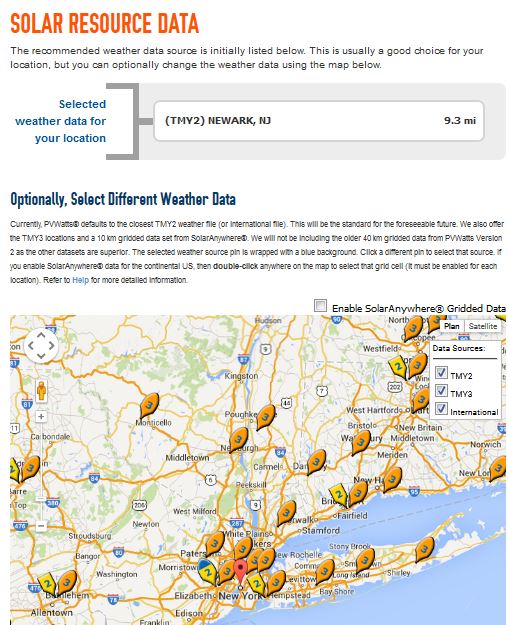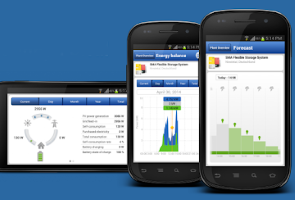PVWatts is a useful map-based free online software for US and international photovoltaic sites analysis.
It could give the global annual energy output of PV systems connected to the grid in USA or in many part of the world. For many locations it could also provides PV energy output hourly values.
PV WATTS also provides international solar maps.
This powerfull and easy to use tool is developped by the NREL (US National Renewable Energy Laboratory)
Caution : it works only for crystalline solar panels.
PVWatts calculator calculates the energy production and cost savings of
connected to the grid photovoltaic (PV) systems throughout the world
(USA, UK, Europe, france, Italy, spain...) Totally free, It allows
anybody to easily estimate the performance of worlwide
PV projects.
PVWatts calculator provides also estimated monthly and annual
irradiation and energy production in kilowatts and energy value. Users
can select a location and choose to use default values or their own
system parameters for size, electric cost, array type, tilt angle, and
azimuth angle. In addition, the PVWatts calculator can provide hourly
performance data for the selected location.
Screenshot of PVWATTS :

Presentation of PVWATTS
PVWATTS v.2 incorporates NREL's 40 km resolution solar resource data to permit site-specific calculations. Accessed through the PVWATTS Version 2 IMS site on NREL's Internet Map Server or through NREL's Unites States Solar Atlas. The user identifies the desired grid cell location to run PVWATTS v.2. PVWATTS v.2 calculates performance using hourly data for a nearby TMY2 site that is climatologically similar, and then the output is adjusted based on differences between the TMY2 site and the grid cell with respect to the solar resource (direct, diffuse horizontal, and global horizontal radiation) and daily maximum temperature.Using typical meteorological year weather data for the selected location, PVWatts calculator determines the solar radiation incident of the PV array and the PV cell temperature for each hour of the year. The DC energy for each hour is calculated from the PV system DC rating and the incident solar radiation and then corrected for the PV cell temperature. The AC energy for each hour is calculated by multiplying the DC energy by the overall DC-to-AC derate factor and adjusting for inverter efficiency as a function of load. Hourly values of AC energy are then summed to calculate monthly and annual AC energy production.
PVWATTS parameters
For both PVWATTS , default system parameters are used, but users have the option to change the following :- DC rating
- DC to AC derate factor
- type of PV array (fixed or tracking)
- PV array tilt angle
- PV array azimuth angle
- local electric costs
Users cannot change the folowing system parameters:
- installed nominal operating cell temperature (INOCT) of 45°C
- power degradation due to temperature of 0.5%/°C
- angle-of-incidence (reflection) losses for a glass PV module cover
- photovoltaic cell technology : crystalline silicon (mono, poly)
Exemple of photovoltaic system design report with PVWATTS : report PVWATTS Calculator Report (example).
Run PVWATTS calculator ( online solar grid calculator) for a U.S. location or another International location using world map.
Similar articles :
See also PVgis: free solar worldwide calculator
See also online solar photovoltaic software solutions for professional.



